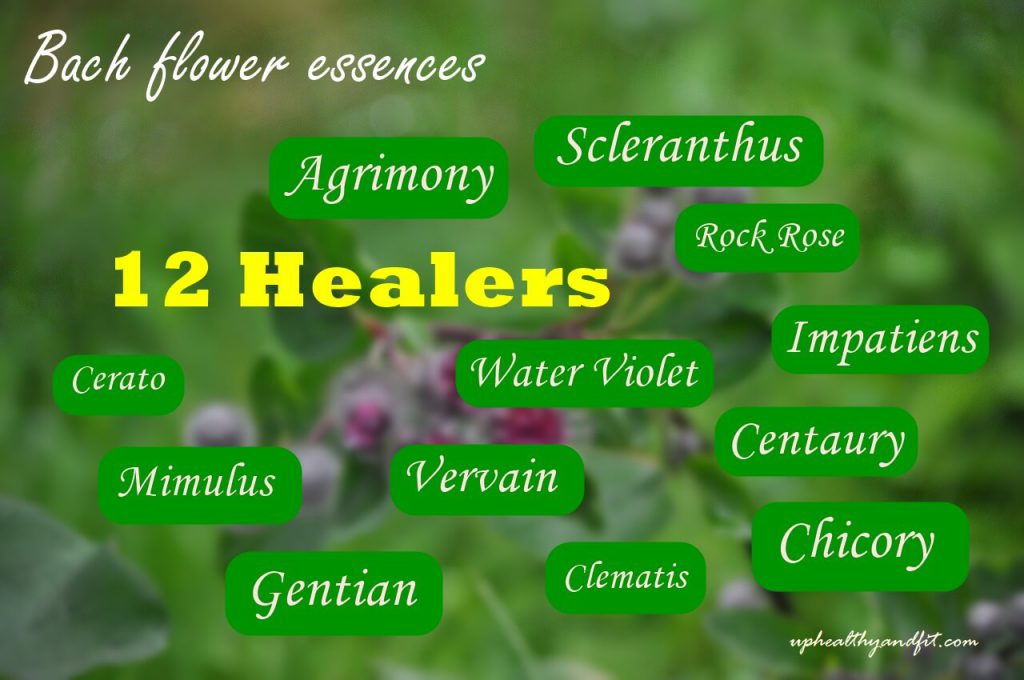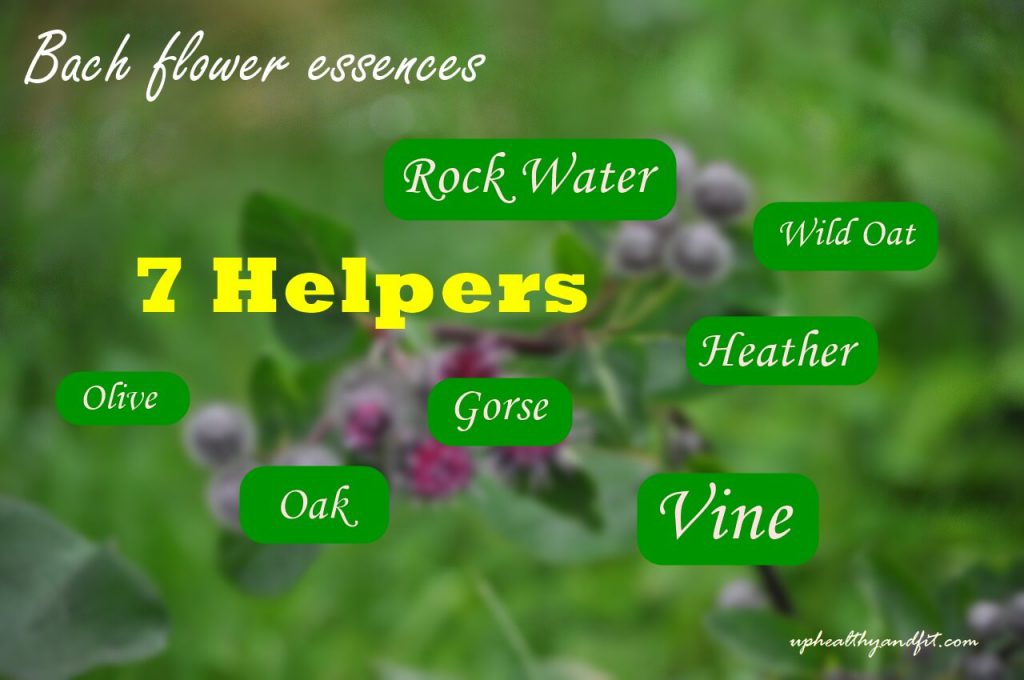They are called the essences of joy and are thought to improve our overall health and wellbeing. But what exactly is the Bach flower therapy and who is it for?
“Seek the outstanding mental conflict in the person, give him the remedy that will overcome that conflict and all the hope and encouragement you can, then the virtue within him will, itself do all the rest.” Edward Bach.
A large amount of the physical disorders and symptoms we suffer from, are just responses of our body to the emotions we experience, to our daily worries. They are called psychosomatic disorders.
In order to treat these disorders, nowadays you can rely on alternative medicine. There are, in fact, a lot of natural remedies to choose from. Among these remedies Bach Flowers are largely used.
What are Bach Flowers?
Bach flowers are flower remedies the British physician Edward Bach came up with. He claimed the importance of a therapy without any side effects; a kind of therapy which also takes into consideration the patient’s emotions and personality.
What is Bach flower therapy?
The main principle of Bach’s therapy is based upon the idea that one single flower remedy can turn any negative emotion into its positive trait, thus removing those physical symptoms of emotional origin.
Which are the Bach flower essences?
Dr. Bach categorized the original 38 flower essences he discovered into 3 categories to assist in their application.
These categories are:
- the ’12 Healers’ which reflect and transform our essential nature, these essences represent personality types;
- the `7 Helpers’ to assist with chronic conditions, and
- the `Second 19′ – essences that support our emotional responses to difficulties and traumatic events.
1 – The “12 Healers” are:
Agrimony: mental torture behind a cheerful face;
Centaury: the inability to say ‘no’;
Chicory: selfish, possessive love;
Rock Rose: terror and fright;
Gentian: discouragement after a setback;
Mimulus: fear of known things;
Impatiens: impatience;
Cerato: lack of trust in one’s own decisions;
Scleranthus: inability to choose between alternatives;
Vervain: over-enthusiasm;
Water Violet: quiet self-reliance leading to isolation;
Clematis: dreaming of the future without working in the present.
This category also represents human personalities: here are the 12 personalities according to Bach’s theory:
- Agrimony: “The jovial, cheerful, humorous people who love peace and are distressed by argument or quarrel, to avoid which they will agree to give up much. Though generally they have troubles and are tormented and restless and worried in mind or in body, they hide their cares behind their humor and are considered very good friends to know. They often take alcohol or drugs in excess, to stimulate them and help themselves bear their trials with cheerfulness.” – Dr. Edward Bach
- Centaury: “Kind, quiet, gentle people who are over-anxious to serve others. They overtax their strength in their endeavors. Their wish so grows upon them that they become more servants than willing helpers. Their good nature leads them to do more than their own share of work, and in so doing they may neglect their own particular mission in life” – Dr. Edward Bach
- Chicory: “Those who are very mindful of the needs of others they tend to be over-full of care for children, relatives, friends, always finding something that should be put right. They are continually correcting what they consider wrong, and enjoy doing so. They desire that those for whom they care should be near them” – Dr. Edward Bach.
- Rock Rose: “The remedy of emergency for cases where there even appears no hope. In accident serious or sudden illness, or when the patient is very frightened or terrified, or if the conditions is serious enough to cause great fear to those around. If the patient is not conscious the lips may be moistened with the remedy.” – Dr. Edward Bach.
- Gentian: “Those who are easily discouraged. They may be progressing well in illness or in the affairs of their daily life, but any small delay or hindrance to progress causes doubt and soon disheartens them.” – Dr. Edward Bach.
- Mimulus: “Fear of worldly things, illness, pain, accidents, poverty, of dark, of being alone, of misfortune. The fears of everyday life. These people quietly and secretly bear their dread; they do not freely speak of it to others.” – Dr. Edward Bach.
- Impatiens: “Those who are quick in thought and action and who wish all things to be done without hesitation or delay. When ill they are anxious for a hasty recovery. They find it very difficult to be patient with people who are slow as they consider it wrong and a waste of time, and they will Endeavour to make such people quicker in all ways. They often prefer to work and think alone, so that they can do everything at their own speed.” – Dr. Edward Bach.
- Cerato: “Those who have not sufficient confidence in themselves to make their own decisions. They constantly seek advice from others and are often misguided” – Dr. Edward Bach.
- Scleranthus: “Those who suffer much from being unable to decide between two things, first one seeming right than the other. They are usually quiet people, and bear their difficulty alone, as they are not inclined to discuss it with others.” – Dr. Edward Bach.
- Vervain: “Those with fixed principles and ideas, which they are confident are right, and which they very rarely change. They have a great wish to convert all around them to their own views of life. They are strong of will and have much courage when they are convinced of those things that they wish to teach. In illness they struggle on long after many would have given up their duties.” – Dr. Edward Bach.
- Water Violet: “For those who in health or illness like to be alone. Very quiet people, who move about without noise, they are aloof, leave people alone and go their own way. Often clever and talented. Their peace and calmness is a blessing to those around them.” – Dr. Edward Bach.
- Clematis: “Those who are dreamy, drowsy, not fully awake, no great interest in life. Quiet people, not really happy in their present circumstances, living more in the future than in the present; living in hopes of happier times when their ideals may come true. In illness some make little or no effort to get well, and in certain cases may even look forward to death, in the hope of better times; or maybe, meeting again some beloved one whom they have lost.” – Dr. Edward Bach.
2 – The “7 Helpers” are:
Rock Water: self-denial, rigidity and self-repression;
Wild Oat: uncertainty over one’s direction in life;
Heather: self-centeredness and self-concern;
Gorse: hopelessness and despair;
Olive: exhaustion following mental or physical effort;
Oak: the plodder who keeps going past the point of exhaustion;
Vine: dominance and inflexibility.
3 – The “Second 19” are:
Holly: hatred, envy and jealousy;
Honeysuckle: living in the past;
Hornbeam: tiredness at the thought of doing something;
White Chestnut: unwanted thoughts and mental arguments.
Sweet Chestnut: unwanted thoughts and mental arguments;
Red Chestnut: over-concern for the welfare of loved ones;
Beech: intolerance;
Chestnut Bud: failure to learn from mistakes;
Larch: lack of confidence;
Crab Apple: the cleansing remedy, also for self-hatred;
Cherry Plum: fear of the mind giving way;
Walnut: protection from change and unwanted influences;
Elm: overwhelmed by responsibility;
Pine: guilt;
Aspen: fear of unknown things;
Wild Rose: drifting, resignation, apathy;
Willow: self-pity and resentment;
Mustard: deep gloom for no reason;
Star of Bethlehem: shock.
There is another classification Doctor Bach came up with and it is related to the emotions to soothe.
It includes 7 groups of flower essences:
1 – Fear: Terror, extreme fear, fright, panic for self, habitual panickers: Rock Rose, Mimulus, Cherry Plum, Aspen, Red Chestnut
2 – Uncertainty: Uncertainty and indecision as to which path to follow: Cerato, Scleranthus, Gentian, Gorse, Hornbeam, Wild Oat.
3 – Lack of interest: Daydreaming, indifferent, vague, inattentive: Clematis, Honeysuckle, Wild Rose, Olive, White Chestnut, Mustard, Chestnut Bud.
4 – Loneliness: Proud, upright, reserved, aloof. Enjoy being alone – need lots of personal space: Water Violet, Impatiens, Heather.
5 – Oversensitivity: Over anxious to please, weak-willed, easily exploited, docile, timid, quiet, conventional, submissive, lacks individuality, follows others advice: Agrimony, Centaury, Walnut, Holly
6 – Despondency and despair: Feels inferior, Anticipation and fear of failure, so does not try: Larch, Pine, Elm, Sweet Chestnut, Star of Bethlehem, Willow, Oak, Crab Apple.
7 – Intolerance: critical, arrogant, judgemental, dissatisfied, irritable, fault-finding. Easily annoyed by another’s habits: Chicory, Vervain, Vine, Beech, Rock Water.
How to take Bach flowers:
Bach flowers come in the form of drops. They are solutions of brandy and water. You can find Bach remedies at herbalists’ and in pharmacies.
Choose the Bach flower essence that best suits your situation and take 4 drops, at least 4 times a day, straight in your mouth; in the morning before breakfast, and in the evening before going to bed; as concerns the 2 other times, you can take the drops whenever you want. You can take Bach flowers even more than 4 times a day, if needed.
These essences can also come in the form of sublingual sprays or herb teas.
“Suffering is a corrective to point out a lesson which by other means we have failed to grasp, and never can it be eradicated until that lesson is learnt.” – Edward Bach, F. J. Wheeler (1998). “The Bach Flower Remedies”, p.11, McGraw Hill Professional
You can choose the Bach flower remedy that best matches your symptoms and personality here:
Thank you for reading The essences of joy and health – What is Bach flower therapy?, and if you find this article useful, please comment below and share it so other people can benefit from it as well!









… [Trackback]
[…] Read More: uphealthyandfit.com/the-essences-of-joy-and-health-what-is-bach-flower-therapy […]